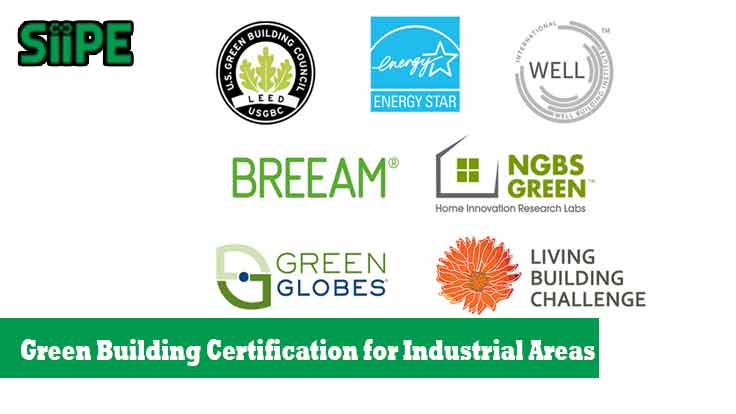As the world shifts toward a more sustainable future, industrial areas are no longer exempt from the call for environmental responsibility. One significant step in this transformation is the Green Building Certification, a system that evaluates and recognizes sustainable building practices. While once considered a standard for commercial or residential buildings, this certification is now becoming increasingly important for industrial areas as well.
In this article, we will explore what green building certification means, why it matters for industrial zones, the benefits it offers, and how businesses can pursue certification to enhance their industrial infrastructure.
What is Green Building Certification?
Green Building Certification refers to a process in which a building or facility is assessed based on its sustainability, energy efficiency, and overall environmental impact. Various organizations around the world offer these certifications, with some of the most widely known being:
-
LEED (Leadership in Energy and Environmental Design) – by the U.S. Green Building Council
-
BREEAM (Building Research Establishment Environmental Assessment Method) – UK-based
-
Green Mark – by Singapore’s Building and Construction Authority
-
Greenship – Indonesia’s national green building rating system, by GBC Indonesia
These certifications set standards for areas like energy use, water efficiency, waste management, materials selection, and indoor environmental quality. For industrial buildings—such as factories, warehouses, and manufacturing facilities—these criteria are adapted to suit large-scale operations with unique challenges.
Why Green Certification Matters for Industrial Areas
Historically, industrial zones have been among the biggest contributors to pollution and environmental degradation. The rise of environmental, social, and governance (ESG) investing and stricter regulations are changing that.
Here’s why green certification is becoming a strategic asset:
1. Reducing Environmental Footprint
Industrial processes consume vast amounts of energy and water. A green-certified industrial building incorporates efficient systems to reduce waste and emissions, helping mitigate climate change.
2. Improving Operational Efficiency
Through better design and smarter resource management, certified facilities often reduce energy bills, water consumption, and maintenance costs over time.
3. Compliance with Regulations
Governments are tightening environmental laws. Certifications help ensure facilities are compliant and may even simplify the permitting process.
4. Boosting Brand Reputation
Sustainability credentials demonstrate a company’s commitment to environmental responsibility—something that customers, investors, and partners value more than ever.
5. Employee Health and Productivity
Better air quality, lighting, and ergonomics in green-certified buildings enhance worker satisfaction and reduce absenteeism.
Key Elements of Green Building Certification in Industrial Areas
For an industrial facility to be certified, it typically needs to excel in several of the following areas:
● Energy Efficiency
Incorporating solar panels, energy-efficient machinery, LED lighting, and intelligent HVAC systems is crucial. Many green buildings also utilize energy modeling to optimize performance.
● Water Management
Water-efficient fixtures, rainwater harvesting systems, and water recycling play a big role. Factories that use water in production must demonstrate responsible water use practices.
● Sustainable Materials
Use of local, recycled, or low-impact materials is encouraged. Certifications often reward facilities that reduce the embodied carbon in their construction.
● Waste Reduction
Efficient waste segregation, recycling programs, and minimal landfill waste generation are essential criteria.
● Site Sustainability
This includes preserving green space, ensuring good connectivity to transport, and minimizing the ecological impact of construction.
● Indoor Environmental Quality
Even in industrial settings, attention to air quality, ventilation, and noise levels can positively impact worker well-being.
Steps to Obtain Green Certification for an Industrial Building
Here’s a typical roadmap to green certification:
1. Feasibility Study and Planning
Engage a green building consultant or certified professional to assess whether the facility can meet certification standards and what changes are needed.
2. Pre-Design Assessment
Map out energy usage, water management, materials procurement, and operational procedures. This step will help set clear goals.
3. Design & Construction
Incorporate green principles into the layout, materials selection, and construction methods. Work closely with contractors experienced in sustainable building.
4. Documentation and Commissioning
Prepare documentation to prove compliance with criteria—this includes energy models, materials reports, and maintenance plans.
5. Third-Party Audit
Certifying bodies will conduct an audit or inspection to verify that the facility meets the required green building standards.
6. Certification and Maintenance
Once approved, the facility receives a certification label. Regular audits or performance reviews may be required to maintain the certification.
Case Study: Green Certified Industrial Park in Asia
One notable example is Kawasan Industri Jababeka in Indonesia. Some buildings in this industrial park have pursued Greenship certification, incorporating renewable energy, efficient wastewater treatment, and green landscaping. These changes have improved environmental performance while attracting multinational tenants that prioritize sustainability.
Challenges in Green Certification for Industrial Areas
Despite the benefits, challenges do exist:
-
High Initial Costs: Installing energy-efficient systems or retrofitting old buildings can be costly.
-
Limited Expertise: Not all contractors or architects are familiar with green standards in industrial settings.
-
Operational Disruption: Retrofitting may require temporary halts in operations, which can be inconvenient.
However, these challenges are being gradually mitigated with government incentives, better technology, and increasing awareness.
Government Incentives and Support
Countries like Singapore, the UAE, and Indonesia offer tax rebates, subsidies, and fast-tracked permits for green-certified projects. Local industrial estate developers may also provide lower lease rates or bonus incentives to companies that go green.
In Indonesia, for example, the GBC Indonesia Greenship program is gaining traction among developers looking to future-proof their industrial zones.
Conclusion: A Smarter Way to Build Industry
Green building certification isn’t just about environmental compliance—it’s a strategic advantage. As more investors and global clients demand sustainable practices, certified industrial zones can stand out as leaders in innovation and responsibility.
In the long run, going green isn’t just the right thing to do—it’s the smart thing to do. Whether you’re a factory owner, estate developer, or industrial planner, pursuing green building certification can pave the way for operational efficiency, regulatory peace of mind, and a better future for everyone.
🔎 Frequently Asked Questions (FAQ)
Q1: Is green certification mandatory in industrial zones?
A: Not always, but it is increasingly encouraged by governments and investors. Some regions may require it for certain projects.
Q2: How long does it take to get certified?
A: Typically between 6 to 18 months, depending on the size and readiness of the project.
Q3: What is the cost of green building certification?
A: Costs vary by region, size, and certification type, but initial investments often pay off through long-term savings.
Q4: Can existing buildings be certified?
A: Yes! Many certifications offer pathways for retrofitting and upgrading existing industrial facilities.








